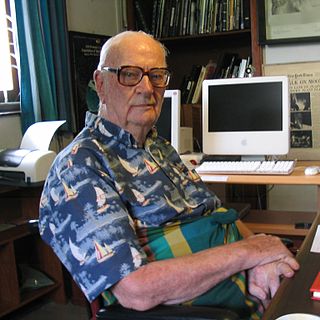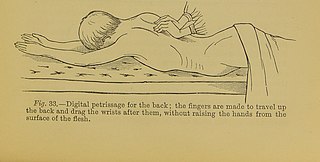
Inflammation of the geniculate ganglion of the facial nerve is a late consequence of varicella zoster virus (VZV) known as Ramsay Hunt syndrome (RHS), commonly known as herpes zoster oticus. In regard to the frequency, less than 1% of varicella zoster infections involve the facial nerve and result in RHS. It is traditionally defined as a triad of ipsilateral facial paralysis, otalgia, and vesicles close to the ear and auditory canal. Due to its proximity to the vestibulocochlear nerve, the virus can spread and cause hearing loss, tinnitus (hearing noises that are not caused by outside sounds), and vertigo. It is common for diagnoses to be overlooked or delayed, which can raise the likelihood of long-term consequences. It is more complicated than Bell's palsy. Therapy aims to shorten its overall length, while also providing pain relief and averting any consequences.

Massage is the manipulation of the body's soft tissues. Massage techniques are commonly applied with hands, fingers, elbows, knees, forearms, feet or a device. The purpose of massage is generally for the treatment of body stress or pain. In European countries, a person professionally trained to give massages is traditionally known as a masseur (male) or masseuse (female). In the United States, these individuals are often referred to as massage therapists, because they must be certified and licensed as "licensed massage therapists". In some provinces of Canada, they are called “Registered massage therapists”, as they are regulated health professionals.

Myalgia is the medical term for muscle pain. Myalgia is a symptom of many diseases. The most common cause of acute myalgia is the overuse of a muscle or group of muscles; another likely cause is viral infection, especially when there has been no trauma.

Compartment syndrome is a condition in which increased pressure within one of the body's anatomical compartments results in insufficient blood supply to tissue within that space. There are two main types: acute and chronic. Compartments of the leg or arm are most commonly involved.

Post-polio syndrome is a group of latent symptoms of poliomyelitis (polio), occurring at about a 25–40% rate. These symptoms are caused by the damaging effects of the viral infection on the nervous system. Symptoms typically occur 15 to 30 years after an initial acute paralytic attack. Symptoms include decreasing muscular function or acute weakness with pain and fatigue. The same symptoms may also occur years after a nonparalytic polio (NPP) infection.
Paresthesia is an abnormal sensation of the skin with no apparent physical cause. Paresthesia may be transient or chronic, and may have many possible underlying causes. Paresthesias are usually painless and can occur anywhere on the body, but most commonly occur in the arms and legs.

Petrissage is a massage technique that applies deep pressure to the underlying muscles. Kneading, wringing, skin rolling and pick-up-and-squeeze are the petrissage movements. They are all performed with the padded palmar surface of the hand, the surface of the finger and also the thumbs.
The primary goals of stroke management are to reduce brain injury and promote maximum patient recovery. Rapid detection and appropriate emergency medical care are essential for optimizing health outcomes. When available, patients are admitted to an acute stroke unit for treatment. These units specialize in providing medical and surgical care aimed at stabilizing the patient's medical status. Standardized assessments are also performed to aid in the development of an appropriate care plan. Current research suggests that stroke units may be effective in reducing in-hospital fatality rates and the length of hospital stays.

A shin splint, also known as medial tibial stress syndrome, is pain along the inside edge of the shinbone (tibia) due to inflammation of tissue in the area. Generally this is between the middle of the lower leg and the ankle. The pain may be dull or sharp, and is generally brought on by high-impact exercise that overloads the tibia. It generally resolves during periods of rest. Complications may include stress fractures.
Myofascial release is an alternative medicine therapy claimed to be useful for treating skeletal muscle immobility and pain by relaxing contracted muscles, improving blood and lymphatic circulation and stimulating the stretch reflex in muscles.

The stone massage is a form of alternative medicine massage therapy and bodywork involving the placement of either heated or cooled stones to the body for the purpose of pain relief, relaxation and therapy. There are many variations and techniques used in the application of stone massage therapy, deriving from a variety of traditional practices. Stone massages are primarily used to alleviate physical pain issues, however, are also used to promote emotional and spiritual wellbeing in practice.
Myofascial pain syndrome (MPS), also known as chronic myofascial pain (CMP), is a syndrome characterized by chronic pain in multiple myofascial trigger points ("knots") and fascial constrictions. It can appear in any body part. Symptoms of a myofascial trigger point include: focal point tenderness, reproduction of pain upon trigger point palpation, hardening of the muscle upon trigger point palpation, pseudo-weakness of the involved muscle, referred pain, and limited range of motion following approximately 5 seconds of sustained trigger point pressure.
Counterstrain is a technique used in osteopathic medicine, osteopathy, physical therapy, massage therapy, and chiropractic to treat somatic dysfunction. It is a system of diagnosis and treatment that uses tender points, which are produced by trauma, inflammation, postural strain, or disease, to identify structures to manipulate. The manipulation uses light pressure to decompress the local nociceptors and mechanoreceptors responsible for the sensation of pain, returning central sensitization to its normal state. This technique extends Strain-counterstrain, a technique inhibits the reflexes by putting the tissues in a position of ease directly opposite to that of the reflex. Strain-counterstrain is also known as the Jones technique,, and spontaneous release by position. Counterstrain was developed by Lawrence Jones in 1955 and was originally called “Spontaneous Release by Positioning,” before being termed “strain-counterstrain.”
Myotherapy is a form of muscle therapy which focuses on the assessment, treatment and rehabilitation of musculoskeletal pain and associated pathologies. The term myotherapy was originally coined by Bonnie Prudden to describe a specific type of trigger point therapy which she developed in the 1970s based on the earlier work of Travell and Simons who researched the cause and treatment of pain arising from myofascial trigger points. While based on rational principles, there is little scientific research regarding the efficacy of this therapy, so it remains controversial within the medical and academic disciplines.
Anterior interosseous syndrome is a medical condition in which damage to the anterior interosseous nerve (AIN), a distal motor and sensory branch of the median nerve, classically with severe weakness of the pincer movement of the thumb and index finger, and can cause transient pain in the wrist.
Cat massage is a practice used by pet owners to maintain healthy circulatory systems and joints in felines.
This article is about physical therapy in carpal tunnel syndrome.
Fundal massage, also called uterine massage, is a technique used to reduce bleeding and cramping of the uterus after childbirth or after an abortion. As the uterus returns to its nonpregnant size, its muscles contract strongly, which can cause pain. Fundal massage can be performed with one hand over the pubic bone, firmly massaging the uterine fundus, or with the addition of one hand in the vagina compressing the two uterine arteries. Routine use of fundal massage can prevent postpartum or post-abortion hemorrhage and can reduce pain; it may also reduce the need for uterotonics, medications that cause the uterus to contract. It is used to treat uterine atony, a condition where the uterus lacks muscle tone and is soft to the touch instead of firm.
Nerve glide, also known as nerve flossing or nerve stretching, is an exercise that stretches nerves. It facilitates the smooth and regular movement of peripheral nerves in the body. It allows the nerve to glide freely along with the movement of the joint and relax the nerve from compression. Nerve gliding cannot proceed with injuries or inflammations as the nerve is trapped by the tissue surrounding the nerve near the joint. Thus, nerve gliding exercise is widely used in rehabilitation programs and during the post-surgical period. In addition to rehabilitating purposes, nerve gliding exercise is also used alongside other treatments to relieve the symptoms and faster recovery.
Fascial Manipulation is a manual therapy technique developed by Italian physiotherapist Luigi Stecco in the 1980s, aimed at evaluating and treating global fascial dysfunction by restoring normal motion/gliding to the system.








